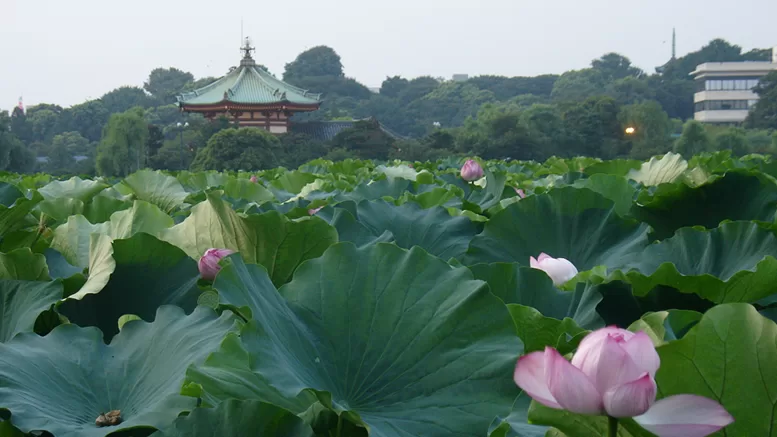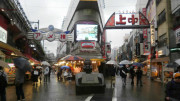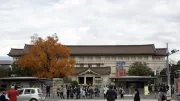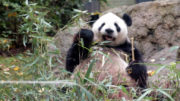Ueno Park, or Ueno Kōen as it is known in Japanese, is one of Tokyo’s more spacious public parks and is home to some of the city’s finest galleries and cultural centres. It also houses the popular Ueno Zoo and is renowned for its breathtaking cherry blossoms in spring.

Dating back to 1873, the park was originally part of the Kaneiji Temple grounds. Much of the temple was destroyed during the Battle of Ueno in the Boshin War of 1868, paving the way for the establishment of the park. Today, little of the temple remains, aside from the magnificent five-storey pagoda (dating back to 1639) and part of the main temple gate.
One of the park’s more striking features is Shinobazu Pond, which is divided into three main sections. With a circumference of around 2 kilometres, the pond is surrounded by lush plant life, including beautiful lotuses. Visitors can often spot a wide variety of birdlife, including ducks—and even alligator snapping turtles, which have become a pest in some Japanese waterways.
Ueno Park is also home to several major cultural institutions, including the Tokyo National Museum, the National Museum of Western Art, and the National Museum of Nature and Science. The park features impressive public art, including numerous sculptures and monuments. A notable highlight is the face of the Ueno Daibutsu Buddha—a bronze remnant of a statue originally dating back to 1631. The rest of the statue was damaged by earthquakes and fires and was eventually melted down during Japan’s Pacific War effort.
The zoo has attracted global attention in recent years thanks to its staged emergency drills, in which staff dressed as large animals are “captured” in mock escape scenarios. Ueno Zoo is Japan’s oldest zoo, established in 1882, and spans over 14 hectares. It is home to over 450 animal species, including gorillas, rhinos, tigers, elephants, and the star attractions—Ri Ri and Shin Shin, two magnificent giant pandas.
While Ueno Park is popular every day, it becomes especially busy on weekends. It’s estimated that over 10 million people visit the park each year. A major draw is the cherry blossom season in March and April, when over 8,000 cherry trees bloom. During this time, visitors enjoy picnics, browse market stalls, and relax at cafés and outdoor eateries.
Ueno Park is conveniently located next to Ueno Station, with Higashi-Ueno, Nishi-Ueno, and Keisei Ueno Stations also within short walking distance.




